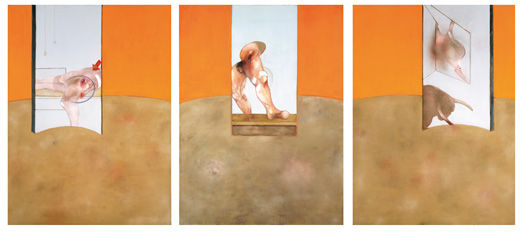Art Gallery of New South Wales
17 November 2012 - 24 February 2013
 |
| Three Studies for Portrait of Isabel Rawsthorne |
Many of his triptychs are of George Dyer as he appears to work out his grief and anger on canvas. Three Studies of Male Back (1970) reveal a man reading or shaving reflected in a mirror, except in middle picture the mirror is symbolically a dark void. The figures in Triptych (1970) echo earlier themes of wrestlers but now the protruding spine points to vulnerability and the swinging hammock with distorted shadow and no background highlights loneliness and isolation.
 |
| Three Studies of male back (1970) |
 |
| Triptych (1970) |
 |
| Triptych (1972) |
 |
| Triptych (1973) |
 |
| Triptych (1987) |
 |
| Perry Ogden's photo of Francis Bacon's studio |
No comments:
Post a Comment